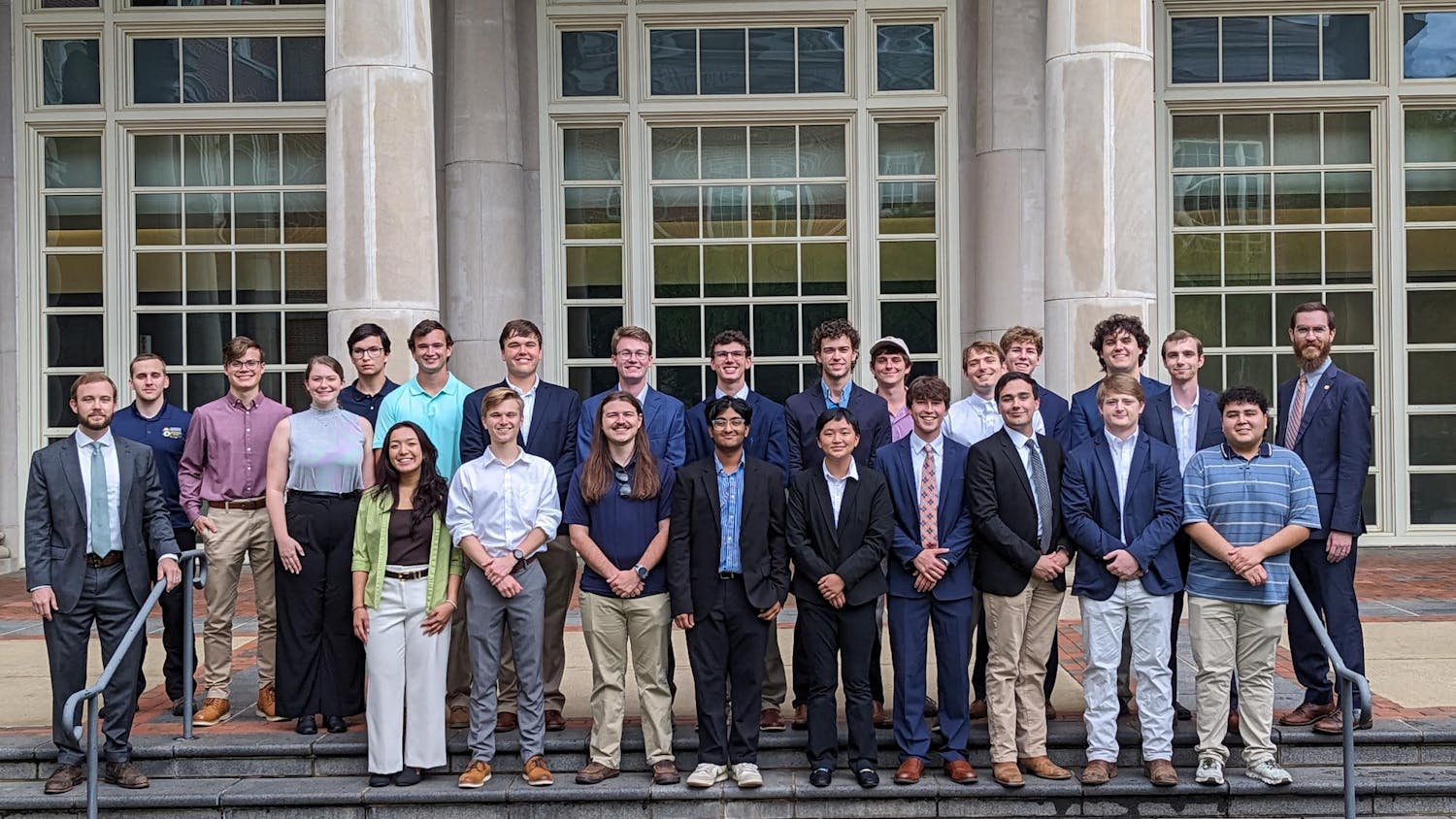Down a long stairwell in the department of theatre sits a room filled with fabrics, mannequins and designs — the costume shop. Every weekday from 8 a.m.-5 p.m., costume coordinator Jennifer Salter pores over fabrics, hems and her sewing machine to produce costumes for the department’s shows.
“I primarily machine sew, but we spend a lot of time hand sewing as well,” Salter said. “Every pant hem and every dress hem is typically hand sewn because we use different stitches to make it have that beautiful finish.”
During a normal performance preparation, Salter has a few weeks to create costumes, but for the most recent show, “Red Badge of Courage,” she had only one week.
“We started making costumes for this show during dress rehearsal for ‘Once Upon a Mattress,’” Salter said. “Depending upon where spring break fell this year, we had a little less time.”
In the costume shop, there are 30-40 mannequins able to be molded to fit an actor’s body type and size before their fitting. Color-coordinated fabrics and commercial patterns can be altered as well.
Daley Browning, senior in musical theatre, is the head of the student costume staff this year.
“One of the best parts about this job is we do so many different kinds of costumes,” Browning said. “We go from ballgowns one week, and then the next week, we are making Civil War costumes.”
In the attic of the shop are rows of costumes from every show performed at Auburn. Completing the costumes is a shelf of wigs, jewelry and other accessories dating back as far as the Victorian era.
“Say we are doing an antebellum show and need to see how the women wore their hair or did their jewelry back then,” Salter said. “Well, we have an antebellum box, and we just pull them out and use it as a reference.”
Along with costume design also comes makeup and hairstyles for each actor. Alison Hora, senior in theatre, said she knows exactly how to pair a hairstyle with a costume.
“For wigs you first have to research, for example, what types of curls they had, and if they even had curls.” Hora said. “Then you have to do what’s called ‘fronting,’ where you pull an actor’s hair back as tight as it will go and measure the wig on their head, and then cut a little off the front (of the wig).”
In general, Salter said costuming is a long, arduous process that takes dedication and begins with associate professor Tracy Oleinick’s designs.
“I get the designs from Tracy, and then we sit down and talk about the renderings, asking things like, ‘Does this actor need a pocket?’ ‘Do you want a seam here?’” Salter said.
Once the design format is determined, Salter starts working on the actual construction of the costume by either draping muslin on the mannequin or cutting from a commercial pattern. After the first trial, the actor has a “mock-up” for fittings and costume adjustments.
“I be sure to leave off any zippers or hems, so that when the actor has their final fitting I can adjust the costume again,” Salter said.
Finally, after alterations, the costumes are ready to wear.
Browning said it is hard to choose which costumes were her favorites, but there was one that really stood out to her.
“I think the corsets from ‘Hedda Gabler’ were my favorites,” Browning said. “We got to build the costume around the shape of the corset rather than the person’s body, and they were the most challenging and historically accurate I’ve been able to work with.”
Do you like this story? The Plainsman doesn't accept money from tuition or student fees, and we don't charge a subscription fee. But you can donate to support The Plainsman.




